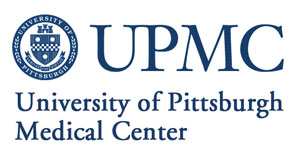Atomoxetine and Parent Management Training in Treating Children With Autism and Symptoms of Attention Deficit Disorder With Hyperactivity
| Status: | Completed |
|---|---|
| Conditions: | Neurology, Psychiatric, Autism |
| Therapuetic Areas: | Neurology, Psychiatry / Psychology |
| Healthy: | No |
| Age Range: | Any |
| Updated: | 9/23/2012 |
| Start Date: | August 2008 |
| End Date: | April 2013 |
Atomoxetine, Placebo, and Parent Training in Autism
This study will evaluate the effectiveness of the medication atomoxetine, with and without
parent management training, in treating children with autism or pervasive developmental
disorder not otherwise specified who have symptoms of attention deficit hyperactivity
disorder.
Autism and pervasive developmental disorder not otherwise specified (PDDNOS), an autism
spectrum disorder, are brain development disorders characterized by abnormalities in
communication, social interactions, and range of interests. Overactivity and inattention,
both symptoms of attention deficit hyperactivity disorder (ADHD), are commonly reported
among children with autism. Recent data have suggested that at least 14% of children with
autism are treated for ADHD symptoms, typically with stimulant medication. However, response
rates to stimulant medication are poorer among children with autism than among typically
developing children with ADHD, suggesting a substantial need for potential alternative
treatment options. Previous studies have shown that training programs that teach parents
ways to address adaptive behavior and behavioral problems can be effective in improving
symptoms of autism and ADHD in children. Parent training, in combination with the
nonstimulant ADHD medication atomoxetine, may be the best way to improve emotional and
attention-related problems in children with autism and ADHD. This study will evaluate the
effectiveness of the medication atomoxetine, with and without parent management training
(PMT), in treating children with autism or PDDNOS who have symptoms of ADHD.
Participation in this study will last 9 months and will include two phases. Phase 1 will
last 12 weeks. After screening, all eligible child participants will undergo baseline
assessments that will include tests of attention and/or memory on a computer system, vital
sign measurements, and a review of past medications. Parent participants will also complete
questionnaires about their child's behavior and symptoms and a review of any previous parent
training experiences.
Participants will then be assigned randomly to one of four treatment groups: atomoxetine
plus PMT, atomoxetine alone, placebo plus PMT, or placebo alone. Child participants will
take their assigned study medication twice daily for 10 weeks and will attend weekly clinic
visits. During these visits, child participants will undergo vital sign measurements,
possible medication adjustments, and some of the baseline learning testing. Parent
participants will be asked questions about their child's side effects and behavior.
Participants assigned to also receive PMT will individually meet with a clinician weekly for
10 weeks. The sessions involving a parent and child or parent alone will include parenting
instruction, practice activities, behavior rehearsal with feedback from the behavior
therapist, and role-playing of specific skills. Parents will also be given at-home homework
assignments that will involve practicing techniques learned in sessions and collecting
information on their child's behavior. At the end of Phase 1, all participants will repeat
the baseline assessments and children will undergo a physical exam.
All child participants will be invited to participate in Phase 2, which will last 24 weeks.
If a parent was receiving PMT in Phase I, the sessions will continue once a month for 6
sessions. Upon completing the 24 additional weeks of treatment, all participants will
undergo repeat baseline assessments. For participants who are medication responders in Phase
I, they will continue their current medication and attend 6 monthly clinic visits that will
involve the same procedures conducted in Phase 1 visits. Non-responders to ATX will attend 6
monthly clinic visits that will involve the same procedures conducted in Phase 1 visits
except that no labs will be obtained. Non-responders on Placebo who enter the open label ATX
phase 2 will have bi-weekly visits for 3 months, then monthly visits for 3 months. Long Term
Follow Up information will be obtained approximately 9 months after study completion.
Inclusion Criteria:
- Child is 5 years to 13 years 11 months old and has a clinical diagnosis of autism or
PDDNOS on the basis of the Autism Diagnostic Interview-Revised (ADI-R) and clinical
evaluation by Diagnostic and Statistical Manual of Mental Disorders, 4th Edition
(DSM-IV) criteria
- IQ of at least 35
- ADHD symptoms based upon the SNAP-IV, Diagnostic Interview for Children and
Adolescents IV (DICA-IV) and clinically confirmed diagnosis
- Clinical Global Impressions-Severity Scale (CGISS) rating of 4 or greater for ADHD
symptoms
- Reliable care provider available to bring child to clinic visits and weekly PMT
sessions
Exclusion Criteria:
- DSM-IV diagnosis of schizophrenia, schizoaffective disorder, or psychotic disorder
not otherwise specified (based upon DICA-IV)
- Prior failed adequate trial of atomoxetine
- Use of other psychotropic medications that produce central nervous system effects
- Diagnosis of bipolar disorder or major depression
- Diagnosis of high blood pressure, cardiovascular disease, narrow angle glaucoma, or
other significant physical illness
- Pregnant or sexually active female (intercourse in the 6 months before study entry)
- Currently taking effective medication treatment for ADHD
- Prior involvement in structured PMT or other similar program
- Currently on albuterol or taking beta blockers
We found this trial at
3
sites
University of Pittsburgh Medical Center UPMC is one of the leading nonprofit health systems in...
Click here to add this to my saved trials
Univ of Rochester Medical Center One of the nation's top academic medical centers, the University...
Click here to add this to my saved trials
Ohio State University The Ohio State University’s main Columbus campus is one of America’s largest...
Click here to add this to my saved trials


